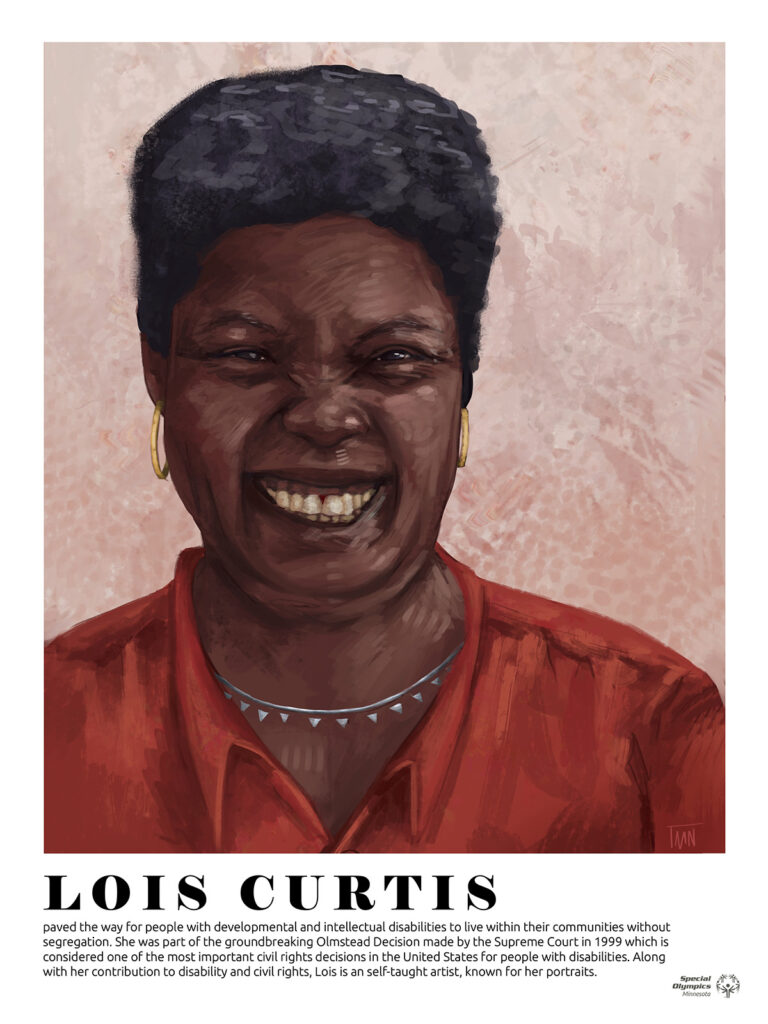As the podcast host of the Everyday Art Room for The Art of Education University, I had the privilege to interview Nick Cedergren and Katie Howlett, representatives of Special Olympics Minnesota. What started as a discussion about a poster series quickly turned into a much deeper conversation that will change my practice as an art teacher. We can assist our students in being a unified generation with the power to change society by intentionally cultivating an inclusive art room for students with disabilities.
Let’s examine three ways to do just that!

What are the Special Olympics?
For many people, the Special Olympics is a once-a-year event. However, it’s so much more than that! Nick and Katie talked to me about Special Olympics Unified Champion Schools®. Their mission is to promote “social inclusion through intentionally planned and implemented activities affecting system-wide change.”
Sure, we associate the Special Olympics with physical activities, but there is also a seamless fit to the art room. According to the program website, “The program is designed to be woven into the fabric of the school, enhancing current efforts and providing rich opportunities that lead to meaningful change in creating a socially inclusive school that supports and engages all learners.” Yes! This is something we can all work together to ensure in our school and art studios.

Here are three things we can do right now!
1. Presume competence.
Often we try to predict what our students need and how to make learning better for them. We spend a lot of time creating adapted lessons and modifications for all to be successful—but have we ever stopped to ask students what they need? One of the core values of Special Olympics Minnesota is, “Nothing about us, without us.” In other words, we need to invite our students into the conversation of modifications rather than predicting or assuming what they need.
Likewise, Nick advises us to “presume competence.” We need to trust that our students know what they need and know what is best for them. We should expect competence first and adapt second. When we presume competence, we maintain consistent high expectations for all students. This creates a unified school environment with opportunities open to all.
This does not mean we do not collaborate with paraprofessionals, case managers, and parents to meet a student’s needs. It means we involve the student in their learning every step of the way.

2. Participate in passive programming.
Passive programming is a natural fit in the art classroom. We know that images in our space can inspire change. Creating and displaying images highlighting a diverse group can foster a more inclusive idea of what is “normal” and acceptable. Students will be able to see themselves reflected no matter their ability level or appearance.
Special Olympics Minnesota uses passive programming. One example is by creating posters promoting the change they want to see. These posters will be exhibited in schools across the nation! I was hired to create a series of posters for elementary schools to promote inclusion. A student artist, Tess Nelson, created a poster series for middle and high schools. The posters highlight heroes in the disability community.

If you are interested in getting a set of posters for your classroom or school, you can order them here.
3. Encourage organic friendships.
Katie says, “Inclusion comes really naturally to students and what this programming is doing is giving opportunities for students of different abilities to interact and form real friendships.” As art teachers, we should continually reflect on our current practices. When we ask students to work together in groups, do we allow them to interact with others with different abilities and create authentic friendships? Do we group and seat students based on perceived competency level or allow natural collaborations to occur?
Nick piggybacks on this idea by explaining, “Our students are our future leaders and our future decision-makers—the people who will go on to hire others in the workspace. When inclusion is baked into everything that we do, they are going to take that into society and into their community.” This idea is huge! We are shaping the next generation, and we can prepare them to be compassionate and accepting.

The shift in mindset to be inclusive results in a classroom where all students’ needs are better met. From Special Olympics Minnesota, we learned we have the power to promote change through inclusivity practices in the art room. We can do this by presuming competence and maintaining high expectations for all students, and by participating in passive programming by incorporating diverse artists into our decor and curriculums. We can also encourage friendships to spark and grow through intentional class activities and opportunities. In making these three simple adjustments this year, we can change our future society, one art class at a time.
To hear more from Nick and Katie about inclusion, listen to the full podcast, Working with Special Olympics Minnesota (Ep. 204).
For more resources on inclusion in the art room, check out the following:
- 100 Children’s Books About Diversity and Inclusion
- Inclusivity for All Learners in the Art Room
- Autism and Art (a graduate-level course)
- What You Need to Know About Inclusive Education in the Art Room
- 22 Ways to Make Your Classroom Welcoming for All Students
How do you promote inclusivity in your art room?
What mindset or strategy will you try out this year?
Magazine articles and podcasts are opinions of professional education contributors and do not necessarily represent the position of the Art of Education University (AOEU) or its academic offerings. Contributors use terms in the way they are most often talked about in the scope of their educational experiences.





